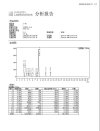5-AMINO 1MQ
Excess weight and obesity can be difficult to reverse or treat effectively. This can be due to changes in metabolism that reduce the ability of the body’s fat stores to break down and become available as a source of energy. As a result, people affected by excess weight and obesity may find it harder to lose weight over time regardless of diets, eating styles or activity patterns.
As fat cells grow larger, they begin to overproduce an enzyme called NNMT. This enzyme acts to slow down fat cell metabolism (fat burning). This slowdown makes it harder for these cells to burn accumulating fat. As fat tissue grows and more NNMT is produced, greater amounts of hormones and pro-inflammatory signals are produced that are responsible for weight gain and other chronic diseases such as type 2 diabetes and cardiovascular disease.
Researchers at the University of Texas discovered a molecule that blocks this metabolic slowdown in white fat cells caused by excess NNMT. By blocking this metabolic slowdown, they were able to increase the metabolism within the white fat cells. Researchers add that by inhibiting the NNMT enzyme, we can increase fat cell metabolism and reduce the size of white fat deposits. We lose weight because we are treating a root cause of obesity and related metabolic disease.
WHAT EXACTLY IS NNMT?
NNMT stands for nicotinamide N-methyltransferase. It is the culprit in this discussion. It is also a very important cytosolic enzyme which modulates cellular energy balance. To put it simply, it regulates nicotinamide and S-(5′-adenosyl)-L-methionine within a couple of intracellular pathways that deal with cellular energy regulation. How many of us have thought that as we age our metabolism just isn’t the same as it used to be? Or why can’t we lose the excess weight that has accumulated over time? What happens when this cellular energy balance becomes unbalanced?
It becomes what is known as the domino effect; one thing leads to the next. In this case, excess weight can lead to increased NNMT enzyme which can lead to poor fat cell metabolism which then leads to increased fat cell mass (weight gain).
Here is why we need to decrease the NNMT for weight loss. First, decreased NNMT means the fat cells won’t grow. Second, decreased NNMT means fat cell metabolism can be corrected. And third, decreased NNMT means we lose weight because the fat cells shrink.
Blocking Metabolic Slowdown = Weight Loss
So how do we block the metabolic slowdown (or inhibit NNMT) so weight loss can occur? Researchers used variations of methylquinolinium (MQ) to measure the effectiveness of blocking NNMT. Out of all the variations of MQ studied,
5-amino 1MQ came out on top as the most effective. 5-amino 1MQ is a small, selective membrane permeable molecule that blocks the NNMT enzyme. What made it even more effective is that it did not affect the activity of any other enzymes in the metabolic cycles which reduced the risks of any potential side-effects.
5-amino 1MQ has shown promise in blocking NNMT to enhance fat cell metabolism and promote weight loss. Most people don’t know that NNMT has been implicated in a number of other diseases including osteoarthritis, metabolic disorders, cardiovascular disease, cancer, Parkinson's disease, kidney disease, and other neurovascular/neurological dysfunctions. 5-amino 1MQ or another variation could be promising to treat a variety of other diseases.
BENEFITS OF 5-AMINO 1MQ
- Can reverse diet-induced obesity
- Can treat related metabolic conditions
- Can increase cellular energy regulators
- Can prevent lipogenesis (fat accumulation)
- Can increase NAD+and SAM concentrations in fat cells
- Can regulate energy expenditure in fat cells
1g $100
5g $330
25g $998



